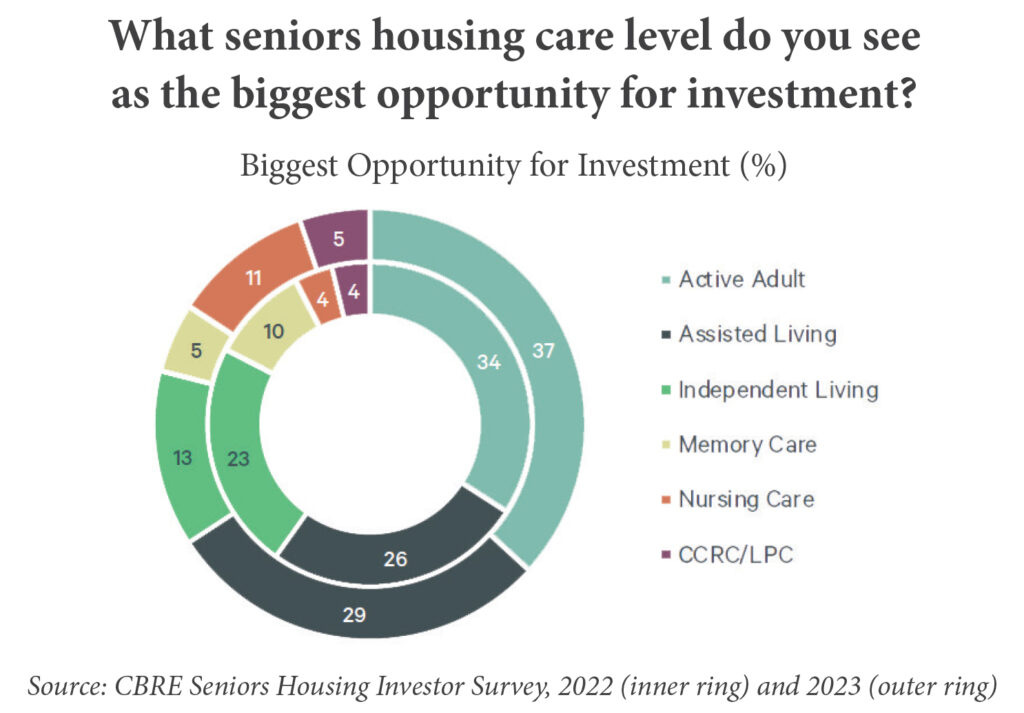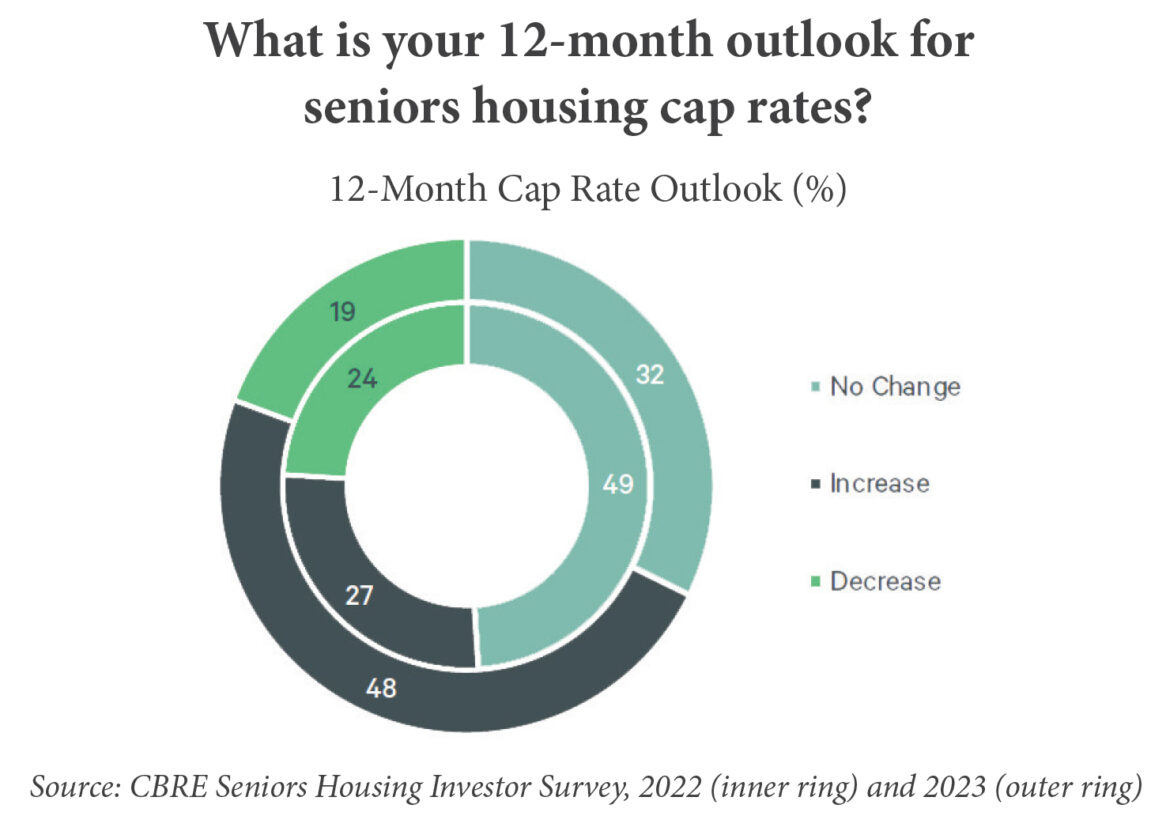By Matt Valley
More than 75 percent of investors surveyed by CBRE expect rental rate increases of at least 3 percent over the next 12 months across all seniors housing asset classes except skilled nursing. The most bullish outlook is in the assisted living sector where 28.1 percent of survey respondents expect to underwrite rent growth above 7 percent, up from 15 percent in the 2022 survey. No decreases in rental rates are expected for any asset class.
Meanwhile, difficulty in maintaining adequate staffing levels ranks as the greatest headwind facing the seniors housing industry this year, the survey found.
In April, CBRE reached out to a list of 50 “influential” market participants to take part in the 12th edition of the U.S. Seniors Housing & Care Investor Survey. CBRE has conducted the survey at least once per year since its inaugural year in 2014. While the past two surveys focused largely on changing market conditions caused by the COVID pandemic, this year’s survey focused more on the impacts of inflation, staffing shortages and rising interest rates.
“Although there are challenges, many investors still consider seniors housing to be an attractive asset class with rental rates trending upward due to the need-based demand and constraints on future supply,” stated Daniel Lincoln, national practice leader of seniors housing and healthcare for CBRE’s Valuation & Advisory Services, in a news release highlighting the survey results.
“Sustained higher interest rates have made it difficult to finance deals, and other challenges such as staffing shortages are expected to persist throughout the remainder of the year,” added Lincoln.
Indeed, the yield on the U.S. 10-year Treasury note, a benchmark for permanent, fixed-rate financing, registered 3.85 percent at the close of business July 20, up from 2.88 percent a year earlier and 1.27 percent two years ago.
Some 37 percent of respondents identify active adult as the biggest investment opportunity in the seniors housing sector this year, driven by younger baby boomers entering their retirement years. Slightly less than one in three survey participants (29 percent) cite assisted living as the biggest investment opportunity followed by independent living (13 percent).
“Investors continue to see active adult as the biggest investment opportunity due to the lower level of supply saturation across most geographies and its better operating risk profile compared to higher acuity alternatives,” CBRE’s Lincoln remarked in response to a follow-up question posed by Seniors Housing Business. “Operating costs at assisted living and memory care residences have been difficult to contain, and rental rate increases necessary to return to pre-COVID operating margins often do not pass the smell test.”

Survey surprise
Nearly 50 percent of respondents to this year’s survey project cap rates to increase over the next 12 months, compared with 27 percent in last year’s survey.
The average seniors housing capitalization rate increased by 26 basis points year over year, the survey findings show, while the average skilled nursing cap rate decreased by 34 basis points.
The cap rate, which measures the rate of return from a real estate investment, is calculated by dividing the property’s annual net operating income (before debt service) by the sales price. Cap rates generally have an inverse relationship to property value. The lower the cap rate, the higher the purchase price and vice versa.
“I was surprised by the significant compression in skilled nursing cap rates and the nearly unanimous expectation of rent growth at a rate much higher than the long-term average across all care levels,” said Lincoln.
A majority of survey respondents cite higher borrowing costs and a constrained lending environment as the most significant threats to the seniors housing industry over the next 12 months.
Rental rate challenge
Knowing when and by how much to raise rental rates is both an art and a science. Operators are increasingly having candid discussions with residents and their families about the need for substantial rental rate increases to offset the spiraling costs of running the business and maintaining a quality staff. The U.S. annual core inflation rate, which excludes volatile items such as food and energy, fell to 4.8 percent in June from 5.3 percent the prior month and was the lowest rate since October 2021.
But consumers are also feeling the pinch, which raises the question of whether annual rate increases of 7 percent or more in the assisted living space are sustainable.
“Assisted living and memory care operators are facing challenges in the coming years, including the affordability outlook for cost-conscious private-pay seniors housing residents and the limited availability of new supply,” explained Lincoln.
“There are several solutions that operators can consider to improve their financial position,” he pointed out. “For example, they can focus on improving operational efficiency to reduce costs or repositioning their communities to better meet the needs of the market. Operators may also consider selling or closing underperforming communities. While there are certainly some challenges ahead, with the right strategies in place, operators can continue to provide high-quality care and services to their residents while also achieving financial sustainability.”

